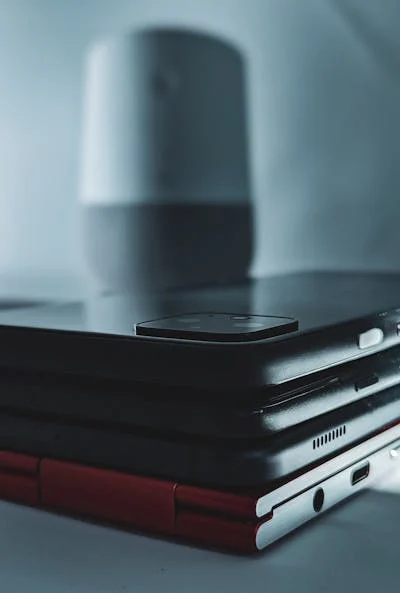
Navigating the World of iPhone Repair: A Comprehensive Guide to Fast and Reliable Services
In today’s digital age, the iPhone has become an indispensable tool for communication, productivity, and entertainment. However, like any electronic device, iPhones are susceptible to damage and malfunctions. Whether it’s a cracked screen, a failing battery, or water damage, finding a reliable iPhone repair service is crucial for restoring your device to its optimal functionality. This guide will provide a comprehensive overview of iPhone repair services, focusing on options near Bishop’s Stortford, Ware, and London, while also delving into cost considerations and essential factors to consider when choosing a repair shop.
The Importance of Reliable iPhone Repair Services
The iPhone’s role in our daily lives cannot be overstated. From staying connected with loved ones to managing work tasks and capturing precious memories, our iPhones are integral to our routines. When an iPhone malfunctions, it can disrupt our lives significantly. Therefore, finding a trusted repair service is paramount.
- Minimizing Downtime: A reliable repair service can quickly diagnose and resolve iPhone issues, minimizing downtime and restoring your device’s functionality promptly.
- Preventing Further Damage: Attempting DIY repairs or entrusting your iPhone to inexperienced technicians can lead to further damage and costly repairs. Professional technicians possess the expertise and tools to handle repairs efficiently and safely.
- Preserving Data Integrity: iPhones often contain sensitive personal data. Reputable repair shops prioritize data security and privacy, ensuring your information remains protected during the repair process.
- Extending Device Lifespan: Proper repairs can extend the lifespan of your iPhone, saving you the cost of purchasing a new device.
Exploring iPhone Repair Options Near Bishop’s Stortford, Ware, and London
Finding a convenient and reliable repair service is essential. Here’s a breakdown of options in key areas:
- Apple Repair Services:
- Apple offers professional repairs through its Apple Stores and authorized service providers.
- Pros:
- Genuine Apple parts are used, ensuring compatibility and quality.
- Repairs are often covered by Apple’s warranty or AppleCare+.
- Technicians are Apple-certified.
- Cons:
- Apple repairs tend to be more expensive than those offered by third-party shops.
- Appointments may be required, and turnaround times can vary.
- Local iPhone Repair Shops:
- Independent repair shops offer a wide range of iPhone repair services at competitive prices.
- iPhone Repair Near Bishop’s Stortford:
- Numerous trusted shops in the area provide fast and efficient repairs.
- Local shops often offer personalized service and quick turnaround times.
- iPhone Repair Near Ware:
- Skilled technicians in Ware provide reliable repairs at competitive prices.
- Many shops offer same-day repairs for common issues.
- iPhone Repair London:
- London boasts a vast array of iPhone repair services, catering to diverse needs and budgets.
- From high street shops to specialized repair centers, London offers a wealth of options.
Understanding iPhone Screen Repair Costs
Screen repairs are among the most common iPhone repairs. The cost of iPhone screen repair varies depending on the model and whether you choose Apple or a third-party repair shop.
- Apple Repair Costs:
- Apple’s screen repair costs are generally higher due to the use of genuine parts and certified technicians.
- Third-Party Repair Costs:
- Independent repair shops often offer significant savings on screen repairs.
- The cost of third-party screen repairs can vary based on the quality of the replacement screen and the shop’s labor rates.
- Cost Breakdown:
- iPhone 13: Apple £200+, Third-Party £120 – £180
- iPhone 12: Apple £180+, Third-Party £100 – £160
- iPhone 11: Apple £160+, Third-Party £80 – £140
- iPhone SE: Apple £130+, Third-Party £60 – £100
Exploring Other Common iPhone Repairs and Costs
Beyond screen repairs, iPhones may require other types of repairs:
- Battery Replacement:
- Battery replacements typically range from £40 to £100, depending on the iPhone model and the repair shop.
- Charging Port Repair:
- Charging port repairs can cost between £50 and £120, depending on the complexity of the repair.
- Water Damage Repair:
- Water damage repairs can be complex and costly, ranging from £60 to £200 or more.
- Software Fixes:
- Software issues can often be resolved for £30 to £80.
Key Considerations When Choosing an iPhone Repair Shop
Selecting a reputable and reliable iPhone repair shop is crucial. Here are some essential factors to consider:
- Check Reviews and Ratings:
- Online reviews and ratings can provide valuable insights into the quality of a repair shop’s services.
- Ask About Warranties:
- A reputable repair shop will offer a warranty on parts and labor, providing peace of mind.
- Compare Prices and Get Quotes:
- Obtain quotes from multiple repair shops to compare prices and find the best deal.
- Inquire About Parts Quality:
- Ensure the repair shop uses high-quality replacement parts, preferably genuine Apple parts or high-quality compatible parts.
- Assess Technician Expertise:
- Inquire about the technicians’ qualifications and experience.
- Evaluate Turnaround Time:
- Consider the repair shop’s turnaround time, especially if you need your iPhone repaired quickly.
- Data Security and Privacy:
- Confirm that the repair service has proper protocols to protect your personal data.
The Importance of Genuine Parts
Using genuine or high-quality compatible parts is crucial for ensuring the longevity and performance of your repaired iPhone. Genuine Apple parts are designed to meet Apple’s strict quality standards, ensuring compatibility and reliability. While high-quality compatible parts can also provide satisfactory results, it’s essential to choose a repair shop that sources parts from reputable suppliers.
Conclusion: Restoring Your iPhone to its Optimal Condition
Finding a reliable iPhone repair service doesn’t have to be a daunting task. By considering the factors outlined in this guide, you can make an informed decision and choose a repair shop that meets your needs and budget. Whether you opt for Apple’s professional services or a reputable local repair shop, prioritizing quality, reliability, and customer service will ensure your iPhone is restored to its optimal condition, allowing you to stay connected and productive.

Ware & Tear Phone & Game Repair: Your One-Stop Solution for Digital Device Downtime
In our fast-paced, digital-centric lives, a malfunctioning smartphone or gaming console can feel like a major disruption. Whether it’s a shattered screen on your beloved iPhone, a battery that drains faster than a sand timer, a software glitch that freezes your Samsung, or a PS5 that’s decided to take an unscheduled hiatus, finding a reliable repair service is paramount. That’s where Ware & Tear Phone & Game Repair steps in, providing top-quality, fast, reliable, and affordable repair solutions for all major smartphone and gaming console brands.
Why Choose Ware & Tear Phone & Game Repair? Your Trusted Tech Partners
When your essential devices falter, you need more than just a quick fix; you need a team you can trust. If you’re searching for “Ware & Tear Phone & Game Repair near me,” here’s why we’re the clear choice:
- Certified and Experienced Technicians:
- Our team is composed of highly skilled and certified technicians who possess years of hands-on experience in diagnosing and repairing a wide range of smartphone and gaming console issues.
- We’re not just fixers; we’re problem-solvers. Our technicians stay updated with the latest technological advancements and repair techniques, ensuring they can handle even the most complex problems with precision.
- Each repair is approached with meticulous attention to detail, guaranteeing lasting results and restoring your device to its optimal performance.
- Transparent and Affordable Pricing:
- We understand that unexpected repairs can strain your budget. That’s why we believe in transparent pricing with no hidden costs.
- If you’re looking to check “Ware & Tear Phone & Game Repair prices,” you’ll find our rates are highly competitive, offering exceptional value for the quality of our services.
- We provide clear, detailed estimates before any work begins, so you know exactly what to expect.
- Swift and Efficient Same-Day Repairs:
- We recognize the urgency of getting your devices back in working order. That’s why we strive to complete most repairs on the same day.
- Our streamlined repair process, coupled with our well-stocked inventory of genuine parts, enables us to minimize downtime and get you back to your digital life quickly.
- We prioritize efficiency without compromising on quality, ensuring your devices are repaired correctly the first time.
- Genuine, High-Quality Parts:
- We believe in using only genuine, manufacturer-approved components to ensure optimal performance and longevity for your devices.
- Using inferior, counterfeit parts can lead to further complications and damage. Our commitment to quality ensures your devices function as intended after the repair.
- This dedication to genuine parts provides peace of mind and safeguards your investment.
- Convenient and Accessible Location:
- Our easily accessible location makes us the ideal choice for anyone searching for “Ware & Tear Phone & Game Repair near me.”
- We strive to make the repair process as convenient as possible, offering a welcoming and efficient service environment.
Our Comprehensive Phone & Gaming Console Repair Services:
We offer a wide range of repair services to address virtually any smartphone or gaming console issue:
- Phone Screen Repair & Replacement:
- Cracked or unresponsive screens can render your smartphone unusable. Our technicians can quickly and efficiently replace damaged screens for iPhone, Samsung, and other leading brands.
- We handle all screen types, including LCD, OLED, and AMOLED, ensuring a perfect fit for your device.
- Battery & Charging Port Repairs:
- Is your phone losing battery too quickly or not charging at all? Our technicians provide efficient battery replacements and charging port fixes, restoring your device’s power reliability.
- We can also repair wireless charging problems.
- Ware & Tear Phone & Game Repair PS5 Services:
- If your PS5 is overheating, crashing, or not turning on, our experts will diagnose and repair the issue to restore optimal performance.
- We troubleshoot all ps5 hardware and software issues.
- We understand the importance of your gaming experience, and work to get you back to playing as quickly as possible.
- Water Damage Restoration:
- Accidentally dropped your phone in water? Our professionals assess and repair water-damaged devices to prevent further issues and restore functionality.
- Quick action is extremely important with water damage.
- Software Troubleshooting & Updates:
- From performance lags to app crashes, we optimize and repair smartphone and gaming system software issues, ensuring smooth and efficient operation.
- We also perform operating system updates.
- Speaker & Camera Fixes:
- If your phone’s camera is blurry or your speaker isn’t working, we replace and repair faulty components efficiently, restoring your device’s multimedia capabilities.
- Microphone and earpiece repairs are also offered.
Ware & Tear Phone & Game Repair Reviews: Real Customer Experiences
- Our clients consistently praise our fast turnaround time, skilled technicians, and affordable pricing.
- Read real “Ware & Tear Phone & Game Repair reviews” to see why we are the preferred choice for phone and game console repairs.
- We value customer feedback, and are always looking for ways to improve our services.
Ware n Tear: Your Trusted Repair Partner
- Many customers refer to us as “Ware n Tear” due to our reliability and expertise.
- Whether it’s a phone or gaming console issue, we provide top-tier repair solutions with a commitment to customer satisfaction.
Ware & Tear Phone & Game Repair Contact Number: Get in Touch Today
- Need assistance? Get in touch with us for quick inquiries and appointment bookings.
- We are here to help.
Get Your Phone or Game Console Fixed Today! Don’t Let Digital Downtime Disrupt Your Life
- Don’t let a damaged phone or console ruin your experience. Visit Ware & Tear Phone & Game Repair for professional, reliable, and affordable repair services today!
- We look forward to serving you.

Mobile Ware: Your Comprehensive Guide to Trusted Mobile Repairs & Accessories
In our increasingly digital world, mobile phones have become indispensable tools for communication, work, and entertainment. However, these vital devices are prone to malfunctions and damages, requiring reliable and affordable repair solutions. This guide will help you navigate the world of “Mobile Ware” services, encompassing everything from screen replacements and battery repairs to software fixes and accessory needs.
Why Choose a Professional Mobile Repair Service?
While DIY fixes and unverified repair shops may seem appealing, professional mobile repair services offer numerous advantages that ensure your device is handled with care and expertise:
- Experienced and Certified Technicians: Professional repair services employ technicians with extensive training and certifications, ensuring they possess the knowledge and skills to diagnose and resolve a wide range of mobile phone issues. They understand the intricacies of various phone models and operating systems, providing expert solutions.
- High-Quality Replacement Parts: Reputable repair services utilize original equipment manufacturer (OEM) parts or high-grade aftermarket parts that meet or exceed OEM standards. This guarantees the durability and longevity of the repairs, preventing future issues and maintaining your device’s performance.
- Warranty on Repairs: Professional repair services provide warranties on their repairs, offering peace of mind and protecting you from potential problems that may arise after the service. This demonstrates their confidence in the quality of their work and their commitment to customer satisfaction.
- Fast Turnaround and Convenience: Recognizing the importance of your mobile phone in your daily life, professional repair services prioritize quick turnaround times. Many offer same-day repairs or doorstep repair services, minimizing disruption and ensuring you stay connected.
Common Mobile Phone Repair Services:
Professional mobile repair services cater to a wide range of issues, ensuring your device is restored to optimal functionality. Here are some of the most common repair services:
- Screen Repair and Replacement: Cracked or shattered screens are among the most frequent mobile phone problems. Professional technicians can replace damaged screens with high-quality replacements, restoring your device’s visual clarity and functionality. Pricing for screen repairs varies depending on the phone model and screen quality.
- iPhone Screen Repair: £50 – £250
- Samsung Screen Repair: £60 – £300
- Other Android Phones: £40 – £200
- Battery Replacement: Over time, mobile phone batteries degrade, leading to shorter battery life and reduced performance. Professional technicians can replace worn-out batteries with new, high-capacity batteries, restoring your device’s power efficiency. Many services offer convenient doorstep battery replacement.
- Water Damage Repair: Accidental water spills or submersion can cause significant damage to internal components. Professional technicians have the expertise and equipment to assess and repair water-damaged devices, increasing the chances of successful recovery.
- Charging Port and Speaker Issues: Faulty charging ports and speakers can hinder your device’s functionality. Professional technicians can clean or replace damaged components, restoring proper charging and audio output.
- Software and Performance Fixes: Software glitches, malware infections, and storage issues can slow down your mobile phone’s performance. Professional technicians can diagnose and resolve these problems, optimizing your device for smooth and efficient operation.
Exploring “Mobile Ware” Concepts:
The term “Mobile Ware” can encompass various aspects of mobile technology, including:
- Mobile Repair Services: As discussed above, this refers to professional services that fix damaged or malfunctioning mobile phones.
- Mobile Accessories: This includes a wide range of products that enhance the functionality and aesthetics of mobile phones, such as cases, chargers, screen protectors, and headphones.
- Mobile Technology and Software: This refers to the broader field of mobile technology, including operating systems, applications, and mobile device management.
- Mobile Ware RV, Gadgets Inn Ware, Icute Mobile, or Gadget Tech Ware: These names represent specific companies or brands that may offer mobile repair services, accessories, or other mobile-related products. It’s important to research these specific entities to understand their offerings and reputation.
Comparing Mobile Repair Services:
When selecting a mobile repair service, consider the following factors to ensure you choose a reputable and reliable provider:
- Reputation and Reviews: Check online ratings and customer testimonials to gauge the service’s quality and customer satisfaction.
- Pricing and Transparency: Obtain clear and upfront pricing information before authorizing any repairs. Compare prices from different providers to ensure you’re getting a fair deal.
- Warranty and Aftercare: Inquire about the service’s warranty policy and aftercare support. A reputable provider will stand behind their work and offer assistance if any issues arise.
- Convenience: Opt for services that offer convenient options, such as doorstep repairs or same-day repairs, to minimize disruption to your schedule.
MobileWare LinkedIn & MOBILEWARE, Inc Denver CO:
For those seeking industry insights or information about specific companies related to mobile technology, platforms like LinkedIn can be valuable resources. You may encounter “MobileWare” on LinkedIn, which can relate to professionals or businesses in the mobile industry. Also searching for “MOBILEWARE, Inc Denver CO” will provide business related results.
Final Thoughts: Get Your Mobile Repaired Today!
Finding a trusted “Mobile Ware” repair service is essential for maintaining your mobile phone’s functionality and longevity. By choosing a professional provider, you can ensure your device is handled with expertise and care, restoring its performance and keeping you connected. Whether you need a screen replacement, battery repair, or software fix, professional repair services offer a hassle-free and reliable solution. Remember to research and compare different providers to find the best option for your needs and budget.

Gadgets Phone Repair: Your Trusted Solution for Device Repairs
In today’s fast-paced digital world, smartphones and other electronic gadgets are indispensable tools for communication, work, and entertainment. However, when these devices break down, finding a reliable repair service becomes essential. At Gadgets Phone Repair, we specialize in fixing a wide range of electronic devices, ensuring that you get back to your routine with minimal disruption. Whether you are looking for gadgets phone repair near Bishop’s Stortford or gadgets phone repair near Hertford, we have you covered with professional, high-quality, and affordable repair solutions.
Why Choose Gadgets Phone Repair?
Choosing a professional repair service ensures that your device is handled by experts who can provide long-lasting solutions. Here are some of the reasons why Gadgets Phone Repair is a preferred choice for customers in Hertfordshire and surrounding areas:
1. Certified and Experienced Technicians
Our team consists of highly skilled technicians with years of experience in repairing smartphones, tablets, and laptops. Whether your device has a cracked screen, faulty battery, or software issues, we have the expertise to diagnose and fix the problem efficiently.
2. Same-Day Repairs for Common Issues
We understand how important your device is to you. That’s why we offer same-day repairs for most common issues, such as screen replacements and battery changes. For more complex problems, we provide a clear timeframe so you know exactly when to expect your device back in working condition.
3. Competitive and Transparent Pricing
Looking for gadgets phone repair prices or gadgets phone repair cost? We believe in transparent pricing, ensuring that you know exactly what you’re paying for. Before we start any repair work, we provide a detailed estimate, so there are no surprises. Our affordable rates ensure you receive high-quality repairs without breaking the bank.
4. High-Quality Genuine Parts with Warranty
We use only top-quality, genuine replacement parts to ensure your device functions like new. Additionally, all our repairs come with a warranty, giving you peace of mind and assurance in the quality of our services.
5. Excellent Customer Satisfaction and Reviews
Customer satisfaction is our top priority. We have built a reputation for providing exceptional service, which is reflected in our positive gadgets phone repair reviews. Our customers praise our professionalism, reliability, and affordability, making us a trusted choice for phone repairs in Hertfordshire and nearby areas.
Comprehensive Repairs for Various Devices
We offer a broad range of repair services for different types of devices, ensuring that no matter what issue you’re facing, we have a solution for you. Here are some of the common repairs we provide:
1. Screen Repair and Replacement
A cracked or shattered screen is one of the most common smartphone issues. At Gadgets Phone Repair, we offer fast and efficient screen replacement services for all major brands, including Apple, Samsung, Google, Huawei, and more. Our high-quality screens ensure durability and a seamless touch experience.
2. Battery Replacement Services
Over time, smartphone batteries degrade, leading to poor battery life and unexpected shutdowns. If your phone isn’t holding a charge like it used to, it might be time for a replacement. We use premium-quality batteries to extend the lifespan of your device and restore its original performance.
3. Water Damage Repair
Accidentally dropped your phone in water? Don’t panic! Bring it to us immediately. Water damage can cause significant issues, but our specialized techniques help recover water-damaged devices and restore functionality.
4. Charging Port and Button Repairs
A faulty charging port or unresponsive buttons can be incredibly frustrating. Whether your device isn’t charging properly or the home button isn’t working, we have the expertise to fix these issues quickly.
5. Software Fixes and Performance Optimization
Is your phone running slow? Experiencing frequent app crashes? Our experts can diagnose and resolve software-related issues, including operating system glitches, malware removal, and performance optimizations, ensuring that your device runs smoothly.
6. Speaker and Microphone Repairs
If your phone’s speaker or microphone isn’t functioning properly, making calls or listening to audio can be challenging. We offer quick repairs to restore the sound quality of your device, allowing you to communicate without interruptions.
Searching for “Gadgets Phone Repairs Near Me”?
If you’re looking for gadgets phone repair near Bishop’s Stortford, gadgets phone repair near Hertford, or surrounding areas, you’ve come to the right place. Our conveniently located store allows easy access for customers needing urgent repairs.
We understand that not everyone has the time to visit a repair center. That’s why we also offer mail-in repair services, allowing you to send us your device for quick and professional repairs, no matter where you are.
Comparison: Gadgets Phone Repair vs. Pocket Geek Tech Repair
Many customers compare our services with Pocket Geek Tech Repair, another well-known repair provider. While both offer excellent services, Gadgets Phone Repair stands out due to our personalized approach, affordable pricing, and use of high-quality parts. Our expert technicians ensure that your device is repaired efficiently, and we focus on customer satisfaction at every step.
Gadgets Phone Repair Price List
We believe in fair and transparent pricing. Below is a general breakdown of our pricing:
- Screen Replacement: Starting from £40 (varies by model)
- Battery Replacement: £30 – £70
- Water Damage Repair: £50 – £100
- Charging Port Repair: £40 – £80
- Software Fixes: £20 – £60
- Speaker & Microphone Repair: £30 – £80
For an accurate price estimate, feel free to contact us.
How to Book a Repair?
Getting your device repaired at Gadgets Phone Repair is simple. Here’s how you can do it:
- Visit Our Store: Bring your device to our shop for a free assessment and instant repair solutions.
- Call Us: If you need a price estimate or want to inquire about a specific repair, call us, and our friendly team will assist you.
- Mail-In Service: Can’t visit us? Use our secure mail-in service to send your device for professional repairs.
Final Thoughts
If you need fast, reliable, and affordable gadgets phone repair, look no further. Our expert team is ready to assist you with all your repair needs. Whether you’re in Bishop’s Stortford, Hertford, or nearby areas, we are here to help.
At Gadgets Phone Repair, we are committed to providing top-quality repair services with transparency and customer satisfaction as our top priorities. Don’t let a broken phone slow you down—contact us today for expert repair solutions!

Navigating a Swollen PSP Battery: A 1000-Word Deep Dive into Safety, Replacement, and Prevention
The PlayStation Portable (PSP), a beloved handheld console, offers a delightful blend of gaming and multimedia experiences. However, like any electronic device powered by a lithium-ion battery, it’s susceptible to battery swelling, a condition that demands immediate attention and careful handling. This comprehensive guide will equip you with the knowledge and practical steps to address a swollen PSP battery, ensuring your safety and the longevity of your device.
Understanding the Culprits: Why PSP Batteries Swell
A swollen battery is a red flag, indicating internal distress. Several factors contribute to this potentially hazardous condition:
- Overcharging and Overheating:
- Prolonged charging beyond the battery’s capacity can lead to thermal runaway, a process where the battery’s internal temperature rises uncontrollably. This causes the electrolyte within the battery to decompose, releasing gases that inflate the battery’s casing.
- Using incompatible or faulty chargers exacerbates this issue, as they may deliver inconsistent voltage or current, leading to excessive heat generation.
- Age and Battery Degradation:
- Lithium-ion batteries have a finite lifespan. Over time, the internal chemical components degrade, leading to imbalances and gas formation.
- Older PSP batteries, especially those stored improperly, are more prone to this type of degradation.
- Environmental Factors:
- Exposure to extreme temperatures, both hot and cold, can accelerate the degradation of battery components.
- Moisture intrusion can cause corrosion and chemical reactions within the battery, leading to gas buildup and swelling.
- Manufacturing Defects and Poor Quality:
- Substandard manufacturing processes or the use of low-quality materials can result in batteries that are inherently prone to swelling.
- Counterfeit or uncertified batteries pose a significant risk due to their lack of quality control.
Immediate Action: Prioritizing Safety When Faced with a Swollen Battery
When you discover a swollen PSP battery, your primary concern should be safety. Follow these steps meticulously:
- 1. Power Down and Disconnect:
- Immediately turn off your PSP and unplug it from any power source.
- Do not attempt to charge or use the device while the battery is swollen.
- 2. Careful Battery Removal:
- Open the battery compartment and gently remove the battery.
- Exercise extreme caution to avoid puncturing or squeezing the battery, as this can release toxic fumes and potentially ignite the battery.
- If the battery is lodged tightly due to swelling, do not force it. Instead, seek assistance from a qualified technician.
- 3. Thorough Inspection:
- Examine the battery for any signs of cracks, leaks, or an unusual odor.
- If the battery is visibly damaged, do not attempt to handle it without protective gloves.
- If the battery is popping out of the PSP, that is a very clear and dangerous sign of swelling.
- 4. Safe Disposal:
- Never dispose of a swollen lithium-ion battery in regular household trash.
- Take the battery to an electronic waste recycling center or a designated battery disposal facility.
- Many retail stores that sell batteries also offer battery recycling programs.
- If you are unsure of where to dispose of the battery, search online for “lithium-ion battery recycling near me” or “how to dispose of PSP battery.”
Replacement and Prevention: Ensuring Long-Term PSP Health
Once you’ve safely disposed of the swollen battery, follow these steps to ensure your PSP’s continued operation:
- 1. Selecting a Replacement Battery:
- Purchase a genuine Sony battery or a high-quality, certified third-party battery that is compatible with your PSP model.
- Avoid purchasing cheap, uncertified batteries, as they pose a significant safety risk and may have a shorter lifespan.
- Read customer reviews and compare prices before making a purchase.
- 2. Best Practices for Battery Maintenance:
- Avoid overcharging your PSP. Disconnect the charger once the battery is fully charged.
- Store your PSP in a cool, dry place, away from direct sunlight and extreme temperatures.
- Use only official Sony chargers or high-quality, certified third-party chargers.
- Regularly check your PSP battery’s health. If you notice any signs of swelling or unusual heat generation, discontinue use immediately.
Community Insights and Professional Assistance
Online communities like Reddit’s r/PSP often provide valuable user-generated tips and troubleshooting advice. However, it’s essential to exercise caution and verify any information you find online.
- Temporary Solutions:
- While some users may suggest temporary workarounds, such as using a wired power source, it’s crucial to prioritize safety.
- Avoid any temporary fixes that involve puncturing or altering the battery’s casing.
- Professional Help:
- If you are unsure about any aspect of battery replacement or repair, seek assistance from a qualified technician.
- Many repair shops specialize in PSP repairs and can provide professional battery replacement services.
- If after a battery replacement, your PSP is still having power issues, then a professional will be needed.
A Final Word on Safety and Responsibility
A swollen PSP battery is a serious issue that should never be ignored. By following the guidelines outlined in this guide, you can ensure your safety and the longevity of your beloved handheld console. Remember to prioritize safety when handling damaged batteries and always opt for quality replacements. By being informed and proactive, you can continue to enjoy your PSP for years to come.

We Buy Mobile Phones: Your Comprehensive Guide to Selling Your Device for Instant Cash
In today’s rapidly evolving technological landscape, upgrading to the latest mobile phone model is a common practice. However, what do you do with your old device? Letting it gather dust in a drawer is a waste, and selling it privately can be time-consuming and risky. That’s where “We Buy Mobile Phones” comes in, offering a streamlined, secure, and lucrative solution for selling your used mobile phones.
Why Choose “We Buy Mobile Phones”?
“We Buy Mobile Phones” distinguishes itself from other trade-in services through its commitment to providing a seamless and rewarding experience for its customers. We understand that selling your phone shouldn’t be a hassle, which is why we’ve designed our process to be quick, transparent, and profitable for you.
- Instant Cash Offers: Get Paid Fast
One of the most significant advantages of using our service is the promise of instant cash. Once you provide us with your device’s details, you’ll receive an immediate quote. If you accept, you’ll be paid promptly after we verify your device’s condition. This eliminates the uncertainty and delays associated with private sales or other trade-in platforms.
- Any Brand, Any Condition: We Buy It All
Whether you own an iPhone, Samsung, Huawei, or any other brand, we’re interested. We also buy phones in various conditions, from brand new and used to even broken devices. This inclusive approach ensures that you can find a buyer for your phone regardless of its state.
- Convenient Online Process: Sell from Home
Our “We Buy Mobile Online” service allows you to sell your phone from the comfort of your home. Simply enter your device’s details on our website, receive an instant quote, and ship your phone to us. This eliminates the need for physical store visits and streamlines the selling process.
- Competitive Prices: Get the Best Value
We pride ourselves on offering competitive prices for your mobile phones. Our team continuously monitors market trends to ensure that our quotes reflect the current value of your device. This commitment to fair pricing ensures that you receive the best possible return on your investment.
- Secure Transactions: Your Peace of Mind
We understand the importance of security when dealing with online transactions. That’s why we employ robust security measures to protect your personal information and ensure that your payment is processed safely.
Specialized Services for Leading Brands
We Buy Mobile Samsung: Maximizing Your Samsung Trade-In
Samsung phones are highly sought after, and we offer top prices for these devices. Whether you own the latest Galaxy model or an older version, you can expect a great deal from us. Our expertise in Samsung devices allows us to provide accurate valuations and competitive offers.
We Buy Mobile iPhone: Upgrading Made Easy
Upgrading to a new iPhone is exciting, but what about your old device? We buy all iPhone models at competitive prices, making it easy for you to trade in your old phone and offset the cost of your new one. Our hassle-free process and same-day payments make upgrading a breeze.
We Buy Mobile Huawei: Getting Paid for Your Huawei Device
Huawei phones are known for their innovative features and high performance. We recognize their value and offer competitive prices for all Huawei models. Trade in your Huawei phone with us and receive fast payment without any hassle.
Comparing “We Buy Mobile Phones” with Competitors
Mazuma Mobile vs. We Buy Mobile: Why Choose Us?
While Mazuma Mobile is a well-known trade-in service, we believe that “We Buy Mobile Phones” offers a superior experience. Our higher quotes, smoother process, and commitment to customer satisfaction set us apart. Compare our offers and see why sellers prefer our platform.
CeX Sell My Phone: Is It Worth It?
CeX is another popular option for selling used electronics. However, we often offer better deals and faster payments compared to CeX. Before deciding, check our prices and see the difference.
Trusted and Reliable Service: Our Customer Reviews
We Buy Any Phone Reviews: Hear from Our Customers
Our “We Buy Any Phone Reviews” highlight why customers trust us for their mobile phone trade-ins. Transparent pricing, excellent customer service, and a smooth selling experience are just a few reasons why sellers choose us. We encourage you to read our reviews and see for yourself.
Why Choose Us to Sell Your Mobile Phone?
- Best Prices: We offer top market rates for your phone, ensuring you get the best value.
- Fast Payment: Get paid on the same day we receive your device, eliminating unnecessary delays.
- Free Postage: Send your phone to us without any extra charges, making the process even more convenient.
- Secure Transactions: Our safe and reliable payment methods provide peace of mind.
- Hassle-Free Process: No hidden fees or complicated procedures, just a quick and easy sale.
The Selling Process: A Step-by-Step Guide
- Get a Free Quote: Enter your phone’s details on our website to receive an instant quote.
- Accept the Offer: If you’re happy with the quote, accept it and prepare your phone for shipping.
- Ship Your Phone: Use our free postage service to send your phone to us.
- Get Paid: Once we verify your phone’s condition, we’ll process your payment on the same day.
Conclusion: Sell Your Phone with Confidence
Selling your mobile phone shouldn’t be a stressful experience. “We Buy Mobile Phones” offers a reliable, efficient, and profitable solution for trading in your device. With competitive prices, fast payments, and a hassle-free process, we make selling your phone easy and rewarding. Get an instant quote today and experience the difference.

Gadgets Phone Repair: Your Comprehensive Guide to Trusted and Efficient Mobile Device Solutions
In today’s fast-paced digital age, mobile phones have become indispensable tools for communication, productivity, and entertainment. When your device malfunctions, it’s crucial to find a reliable repair service that can restore it to optimal functionality quickly and efficiently. “Gadgets Phone Repair” stands out as a trusted solution, offering expert services for a wide range of mobile device issues. This comprehensive guide will delve into the intricacies of Gadgets Phone Repair, covering everything from service offerings and cost considerations to customer reviews and alternative repair solutions.
- The Importance of Choosing a Reliable Repair Service: Why Gadgets Phone Repair?
Selecting a dependable phone repair service is paramount to ensure your device is handled with care and expertise. “Gadgets Phone Repair” distinguishes itself through several key attributes:
- Certified Technicians:
- Our team comprises certified technicians with extensive experience in diagnosing and repairing various mobile device issues.
- Their expertise ensures that your device is in capable hands, and repairs are performed to the highest standards.
- High-Quality Replacement Parts:
- We use only high-quality, genuine, or OEM-equivalent replacement parts to guarantee the longevity and performance of your repaired device.
- This commitment to quality ensures that your device functions like new after the repair.
- Affordable Repair Costs and Warranty Options:
- We offer competitive and transparent pricing, ensuring you receive excellent value for your money.
- Our warranty options provide peace of mind, assuring you of the quality and durability of our repairs.
- Quick Turnaround Times:
- We understand the importance of minimizing downtime, and we strive to provide fast and efficient repair services.
- Our streamlined repair process ensures that your device is returned to you as quickly as possible.
- Comprehensive Mobile Repair Services: Addressing a Wide Range of Issues
Gadgets Phone Repair offers a comprehensive suite of repair services, catering to various mobile device issues:
- Screen Repairs:
- Cracked or broken screens are among the most common mobile phone issues.
- Our technicians can replace damaged screens with precision and expertise, restoring your device’s visual clarity and touch functionality.
- Gadgets phone repair prices for screen replacement vary depending on your device model and the extent of the damage.
- Battery Replacement:
- If your phone’s battery drains quickly or fails to charge properly, it may need a replacement.
- We offer affordable battery replacement services, ensuring your phone operates efficiently and reliably.
- Gadgets phone repair cost for battery services is designed to be budget friendly.
- Water Damage Repair:
- Accidental water spills can cause significant damage to internal components.
- Our technicians are skilled in assessing and repairing water-damaged phones, employing specialized techniques to restore functionality.
- Software and Performance Issues:
- Slow performance, app crashes, and software glitches can hinder your device’s usability.
- We offer comprehensive software troubleshooting and optimization services to resolve these issues and enhance your device’s performance.
- Charging Port Repair:
- Issues with charging ports are also very common, and we are able to repair or replace those parts.
- Camera Repair:
- If your front or rear cameras are not working correctly, we are able to repair or replace them.
- Finding Gadgets Phone Repairs Near Me: Convenient and Accessible Services
Locating a nearby repair shop is essential for fast and convenient service:
- Online Search:
- Searching “Gadgets phone repairs near me” on search engines like Google will provide a list of trusted technicians in your area.
- This allows you to find a repair shop that is easily accessible and convenient for you.
- Local Directories:
- Local directories and online business listings can also help you find Gadgets Phone Repair centers in your vicinity.
- Birmingham Services:
- If you’re in Birmingham, consider exploring “Phone Surgery Birmingham” for reliable and professional repair services.
- Checking Gadgets Phone Repair Reviews: Ensuring Customer Satisfaction
Customer feedback is a valuable indicator of service quality:
- Online Reviews:
- Reading Gadgets phone repair reviews online can provide insights into the service quality, pricing, and customer satisfaction.
- Platforms like Google Reviews, Yelp, and social media can offer valuable customer feedback.
- Testimonials:
- Check the repair shop’s website for customer testimonials and success stories.
- Understanding Repair Costs: Transparent and Competitive Pricing
The cost of phone repairs can vary depending on several factors:
- Device Model and Damage Severity:
- The complexity of the repair and the availability of parts can influence the cost.
- Part Availability:
- Rare or specialized parts may be more expensive.
- Pocket Geek Tech Repair Prices:
- Comparing Pocket Geek Tech repair prices can help you find the best value for your needs.
- General Price Ranges:
- Screen Replacement: $50 – $300
- Battery Replacement: $40 – $150
- Charging Port Repair: $50 – $120
- Water Damage Repair: $60 – $200
- Choosing the Best Repair Service: Key Considerations
When selecting a repair provider, consider these factors:
- Expertise:
- Ensure the technicians are certified and experienced.
- Warranty:
- Choose services that offer warranties on parts and labor.
- Affordability:
- Compare Gadgets phone repair prices before deciding.
- Convenience:
- Consider services that offer doorstep repair or mail-in options.
- Alternative Repair Solutions: Flexible Options
If you prefer a more flexible repair option:
- Pocket Geek Tech Repair Services:
- Explore Pocket Geek Tech repair services, which offer mobile repair solutions at your convenience.
- Final Thoughts: Your Trusted Repair Solution
Gadgets Phone Repair centers provide fast, reliable, and cost-effective solutions for various mobile device issues. By researching Gadgets phone repair reviews and comparing pricing, you can find the best repair service near you. Whether you’re dealing with a cracked screen, battery issues, or software malfunctions, Gadgets Phone Repair is your trusted repair solution.

The Remarkable Journey: A 1000-Word Deep Dive into the Evolution of Android
The Android operating system has undeniably revolutionized the mobile technology landscape, transforming smartphones from mere communication devices to powerful, versatile tools. Its journey, marked by consistent innovation and user-centric design, is a testament to the relentless pursuit of technological advancement. From its humble beginnings to its current status as the world’s most popular mobile OS, the evolution of Android is a captivating story of progress.
The Genesis: From Android 1.0 to the Dessert-Themed Era
The story begins in 2003 with Android Inc., a startup founded by Andy Rubin, Rich Miner, Nick Sears, and Chris White. Google acquired the company in 2005, recognizing the potential of a mobile operating system based on the Linux kernel. In 2008, the first commercial version, Android 1.0, was released, marking the dawn of a new era. While rudimentary by today’s standards, it introduced essential features like Google Maps, Gmail, and the Android Market (now Google Play Store), laying the foundation for future development.
The subsequent years saw the introduction of a series of dessert-themed versions, each bringing significant improvements and new features:
- Android 1.5 Cupcake (2009): Introduced on-screen keyboard, widgets, and video recording.
- Android 1.6 Donut (2009): Added support for different screen sizes and CDMA networks.
- Android 2.0/2.1 Eclair (2009/2010): Introduced turn-by-turn navigation, live wallpapers, and multiple Google accounts support.
- Android 2.2 Froyo (2010): Enhanced performance, USB tethering, and Wi-Fi hotspot functionality.
- Android 2.3 Gingerbread (2010): Improved UI, virtual keyboard, and support for larger screen resolutions.
- Android 3.0 Honeycomb (2011): Specifically designed for tablets, featuring a holographic UI and enhanced multitasking.
- Android 4.0 Ice Cream Sandwich (2011): Unified phone and tablet interfaces, introduced a redesigned UI, and improved multitasking.
- Android 4.1-4.3 Jelly Bean (2012-2013): Focused on performance improvements, Google Now, and rich notifications.
- Android 4.4 KitKat (2013): Optimized for low-end devices, introduced immersive mode, and improved cloud printing.
- Android 5.0 Lollipop (2014): Introduced Material Design, enhanced notifications, and improved battery life.
- Android 6.0 Marshmallow (2015): Added fingerprint authentication, Doze Mode for better battery life, and granular app permissions.
- Android 7.0 Nougat (2016): Introduced split-screen multitasking, inline replies, and improved notifications.
- Android 8.0 Oreo (2017): Focused on performance improvements, picture-in-picture mode, and notification channels.
- Android 9 Pie (2018): Introduced gesture navigation, adaptive battery, and digital wellbeing features.
The Shift to Numerical Naming and Continued Innovation
In 2019, Google transitioned from dessert-themed names to numerical designations, starting with Android 10. This change reflected the increasing maturity of the platform and a focus on clarity and consistency.
- Android 10 (2019): Introduced system-wide dark mode, improved privacy settings, and gesture navigation enhancements.
- Android 11 (2020): Focused on communication, device controls, and privacy improvements, including conversation bubbles and enhanced permissions.
- Android 12 (2021): Introduced Material You, a dynamic theming system that personalizes the UI based on wallpaper choices, along with improved privacy and performance.
- Android 13 (2022): Refined Material You, enhanced privacy controls, and improved tablet and foldable device support.
- Android 14 (2023): Brought enhancements in security, AI-driven features, and performance improvements, along with further UI customizations.
Looking Ahead: Android 15 and the Future of Mobile Technology
The upcoming Android 15, expected in late 2024, promises to continue this trajectory of innovation. While specific details are yet to be fully revealed, expectations include further refinements in AI integration, enhanced security protocols, and performance optimizations. Google is likely to focus on seamless user experiences, improved connectivity, and advancements in areas like augmented reality and machine learning.
The Impact and Legacy of Android
The evolution of Android has had a profound impact on the mobile industry and beyond. Its open-source nature has fostered a vibrant ecosystem of developers and manufacturers, leading to a wide range of devices and applications. Android’s accessibility and versatility have made it the dominant mobile OS, powering billions of devices worldwide.
The platform’s continuous evolution reflects its commitment to meeting the ever-changing needs of users. With each update, Google refines its operating system, ensuring enhanced security, better customization, and improved efficiency. The future of Android appears bright, promising further advancements that will shape the future of mobile technology.
Resources and Further Exploration
For those seeking more in-depth information, resources like the Evolution of Android Wikipedia page and detailed Evolution of Android PDF documents provide comprehensive insights into the platform’s history and development. Additionally, following the Android latest version name list and keeping track of Android 14 release date & features and Android 15 release date & expectations will keep you abreast of the latest developments.
In conclusion, the evolution of Android is a remarkable journey of innovation and progress. From its humble beginnings to its current status as a global powerhouse, Android has transformed the mobile landscape and continues to shape the future of technology.

Ware Lions FC: A Pride in Progress – Fixtures, Players, and the Heart of Local Football
Ware Lions FC, a name that resonates with local football enthusiasts, embodies the spirit of community-driven sport. More than just a football club, Ware Lions FC is a testament to the dedication, passion, and camaraderie that grassroots football fosters. This article delves into the heart of Ware Lions FC, exploring their fixtures, players, and the enduring appeal they hold within the local community.
The Heart of Local Football: Ware Lions FC’s Identity
Ware Lions FC isn’t just another team; it’s a vital part of the local sporting fabric. The club’s identity is deeply rooted in the community, fostering a sense of belonging and pride among players and supporters alike. This local focus is what distinguishes them, creating an atmosphere where every match feels personal and every victory is shared.
The club’s ethos revolves around providing opportunities for local talent, promoting sportsmanship, and building a strong, united team. This commitment to community values is evident in their approach to training, player development, and fan engagement.
Ware Lions FC Fixtures: The Rhythm of the Season
The anticipation of match day is a constant buzz around Ware Lions FC. The Ware Lions FC fixtures are the lifeblood of the club, marking the rhythm of the season and providing the community with regular opportunities to come together and support their team.
Each fixture is more than just a game; it’s a chance for the team to showcase their skills, for the fans to express their unwavering support, and for the community to celebrate their shared passion. The fixtures are carefully planned, balancing competitive matches with opportunities for player development and community engagement.
The club’s approach to fixtures is strategic, focusing on building momentum throughout the season. They understand the importance of consistency and teamwork, and each match is approached with a clear game plan and a determination to succeed.
Local derbies and cup matches generate particular excitement, drawing larger crowds and creating a vibrant atmosphere. These fixtures are not just about winning; they are about pride, rivalry, and the shared experience of local football.
Ware Lions FC Players: The Backbone of the Team
The strength of Ware Lions FC lies in its players. The Ware Lions FC players are a diverse group of individuals united by their love of the game and their commitment to the club. They represent the heart and soul of the team, embodying the values of hard work, dedication, and sportsmanship.
The club’s player development program is a cornerstone of its success. They invest in nurturing local talent, providing opportunities for young players to develop their skills and reach their full potential. This focus on homegrown talent creates a strong bond between the players and the community.
Each player brings unique skills and qualities to the team, contributing to its overall strength and versatility. From the experienced veterans who provide leadership and guidance to the enthusiastic newcomers who bring fresh energy and ideas, the team is a well-balanced mix of talent and experience.
The players’ commitment extends beyond the pitch. They are active members of the community, participating in local events and initiatives, and serving as role models for young aspiring footballers. This connection to the community reinforces the club’s identity and strengthens the bond between the team and its supporters.
Community Engagement: The Driving Force
Ware Lions FC’s impact extends beyond the boundaries of the football pitch. The club actively engages with the local community, fostering a sense of belonging and pride. They organize events, workshops, and initiatives that bring people together and promote the positive values of sport.
The club’s commitment to community engagement is evident in its outreach programs, which provide opportunities for young people to participate in football and develop their skills. These programs not only benefit the participants but also strengthen the club’s connection to the community.
The club’s social media presence plays a vital role in keeping fans informed and engaged. They share match updates, player profiles, and community news, creating a sense of connection and belonging.
Looking Ahead: The Future of Ware Lions FC
Ware Lions FC’s future is bright, filled with potential and promise. The club’s commitment to community values, player development, and fan engagement provides a solid foundation for continued success.
The club’s leadership is focused on building a sustainable future, ensuring that Ware Lions FC remains a vital part of the local sporting landscape for generations to come. This includes investing in infrastructure, developing partnerships with local businesses, and expanding their outreach programs.
The club’s ambition extends beyond local success. They aspire to climb the football pyramid, competing at higher levels and showcasing their talent on a wider stage. This ambition is fueled by the passion and dedication of their players, the unwavering support of their fans, and the strong foundation they have built within the community.
Ware Lions FC is more than just a football club; it’s a symbol of community spirit, a source of local pride, and a testament to the enduring power of grassroots football. Their journey is a story of passion, dedication, and the unwavering belief in the power of sport to bring people together.










